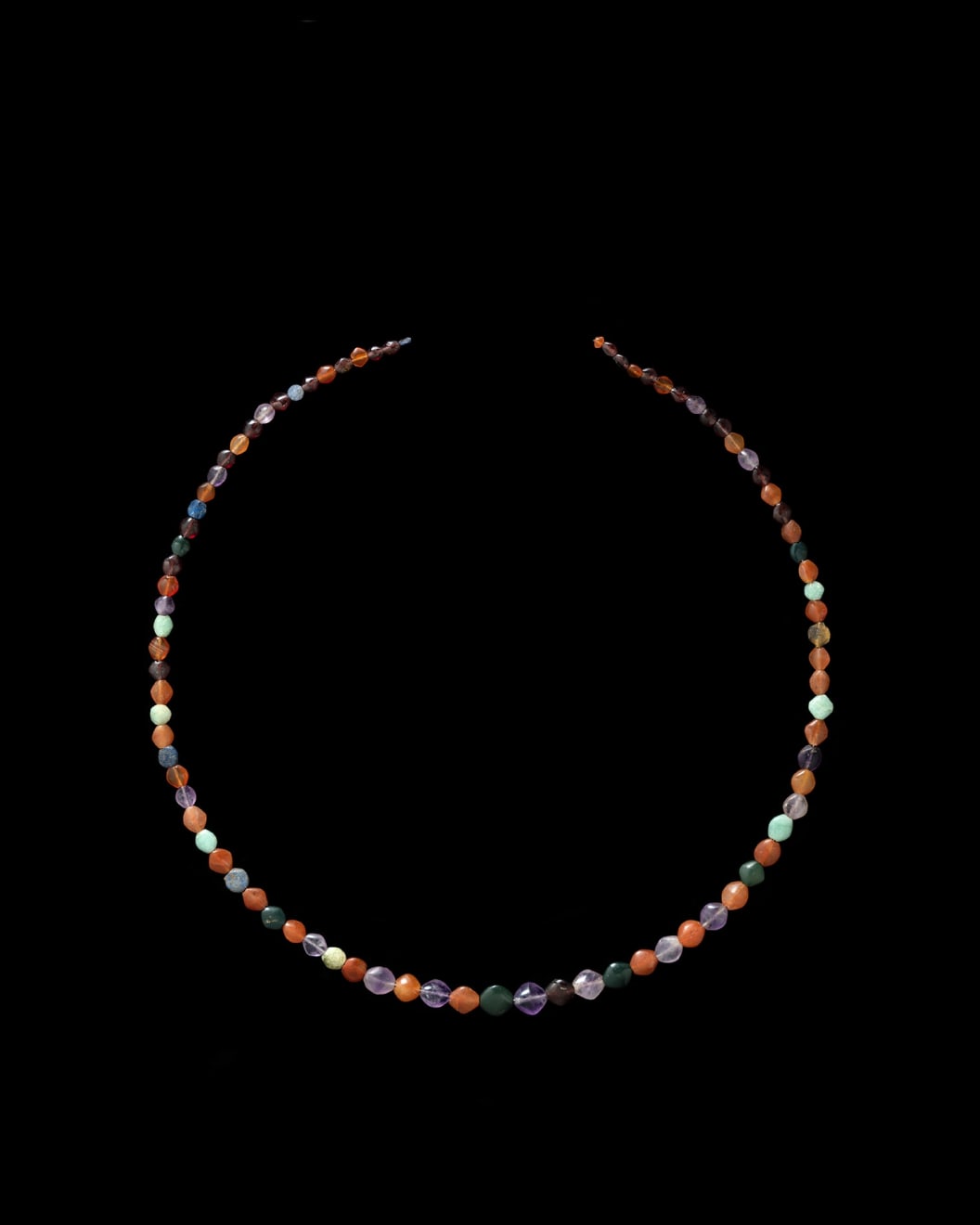Egyptian
A necklace of Egyptian hardstone small lentoid beads, Middle Kingdom, 11th – 12th Dynasty, circa 2000 - 1800 BC
Hardstone
Length: 49.5 cm
The necklace is restrung from 105 lentoid hardstone Egyptian beads including feldspar, garnet, lapis, amethyst, carnelian and jasper, with a single metal bead, probably electrum.
The necklace is restrung from 105 lentoid hardstone Egyptian beads including feldspar, garnet, lapis, amethyst, carnelian and jasper, with a single metal bead, probably electrum.
Provenance
With Frédérique Tchacos Paris, 1971With Beaux Arts Trades, Hong Kong, 1993
With Galerie Nefer, Zurich, before 1998
Private Collection, Aarau, thence by descent
Private Collection, Switzerland
Exhibitions
On Loan: Antikenmuseum Basel & Sammlung Ludwig, 1998 – 2022Literature
The necklace of Hapiankhtifi from Meir shows similar beads in multiple hued hardstones and precious metal: The Metropolitan Museum of Art, New York, acc. no. 12.183.24. Such beads were popular throughout ancient Egypt and the Middle East with the stones often being imported from very far afield.In Middle Kingdom jewellery, a favoured colour combination was red, light blue-green, and dark blue which in lapidary work, were generally represented by carnelian, turquoise (or feldspar), and lapis lazuli, respectively. This combination can be seen in the masterwork cloisonné inlay jewellery of the Middle Kingdom. Red carnelian is thought to have represented blood’s life-giving properties. The light blue-green colour of turquoise and feldspar was associated with fertility and vegetation. Lapis was a rare, expensive and luxury stone, particularly favoured by royalty.
Publications
A. Wiese, Antikenmuseum Basel und Sammlung Ludwig, Die Ägyptische Abteilung, Mainz, 2001, p. 66-7, no. 31g.1
of
4
